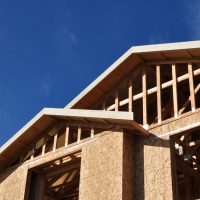
The scheme was launched to encourage high LTV lending particularly to help first-time buyers, a group which makes up the lion’s share of new-build customers.
Of the eight lenders launching 95 per cent LTV products in the weeks since the scheme was announced in the Budget on 3 March, only one – Aldermore – has said they are for new build purchases. All the product launches so far have all come off lenders’ own backs.
Details of products are still to come from the six major lenders that have committed to the new scheme.
“It will be interesting to see which other lenders join in with 95 per cent LTVs,” said Mobeen Akram, national new homes director at Mortgage Advice Bureau.
“The fact that other lenders are doing 95 per cent product is very encouraging and we’ll see what happens with new builds,” she said.
Help for first-time buyers
The new government-backed mortgages scheme has been compared to the existing Help to Buy Equity Loan scheme, which has been seen as a big success in supporting new-build purchases. The Help to Buy initiative sees government provide a loan, interest-free for the first five years, on a portion of the property value, with lenders offering mortgage products on the remainder.
The initial scheme was offered to first-time buyers (FTBs) and movers on home purchases up to £600,000. Th second iteration of Help to Buy is restricted to FTBs, has price caps and higher rates.
“The first scheme was incredibly successful,” said a spokesperson for the Home Builders Federation (HBF).
The second round of Help to Buy had seen “considerable interest,” HBF added, though it comes with more restrictions.
House builder Barratt Developments welcomed government initiatives to support high LTV lending, but remained unclear on the extent of the latest scheme within the new-build market.
“We’ve been working closely with lenders for some months on how we can support 95 per cent lending on new-build homes, particularly looking ahead to the end of Help to Buy,” said Adrian MacDiarmid, head of mortgage lender relations at Barratt Developments.
“We support government initiatives that allow access to homeownership with a five per cent deposit, so the new 95 per cent LTV mortgage scheme is a positive move. It is in our interest to free up second hand sales, which are an important part of a fully functioning, vibrant housing market.
“However, we are uncertain whether lenders will support new build, under the new scheme, and the rules do not allow participating lenders to support 95 per cent lending through other schemes. So we will also work with those lenders who are not supporting it,” MacDiarmid said.
Securitised lenders excluded
There is talk of at least one large building society looking at high LTV products for the new-build market outside of the scheme. Meanwhile, at least one of the larger lenders committed to new government-backed scheme is said not to be lending on new builds.
Additionally, the scheme is open only to banks and excludes securitised specialist lenders.
Like house builders, new-build brokers are waiting to see what products and rates emerge through the new scheme.
“It is positive step by government to support demand. It’s whether the lender chooses, from a commercial perspective, to participate in the guarantee scheme and the rules and regulations that come with it,” said Craig Hall, head of broker relationships and propositions, L&G Mortgage Club.
“Pre-Covid, we were seeing LTVs creep up to 90 per cent on new-build flats and houses.
“Covid knocked us back. A few lenders withdrew from equity loan, but are now back. What we’re not back to is higher LTVs.
“The more lenders, the more competition, the better the pricing and ultimately we may start to see other lenders go back up the LTV risk curve.
“It may well be baby steps up to 90 on new build and then maybe 95 toward the latter part of the year,” Hall said.
He added that with customers’ financial circumstances changing, whether owing to furlough, redundancy and even divorce, it would be increasingly important to ensure a broad range of lenders can support the market.
For the time being, the new-build sector is holding its breath until more details of products emerge in April.
Tom Nicholson, chief operating officer at house builder Crest Nicholson, added: “We look forward to seeing the positive impact of the mortgage guarantee scheme. We await details of the range of product and pricing that lender will bring to market in April, and sincerely hope they will support house builders by offering high LTV products to new homes customers as well to those buying second hand properties.”














